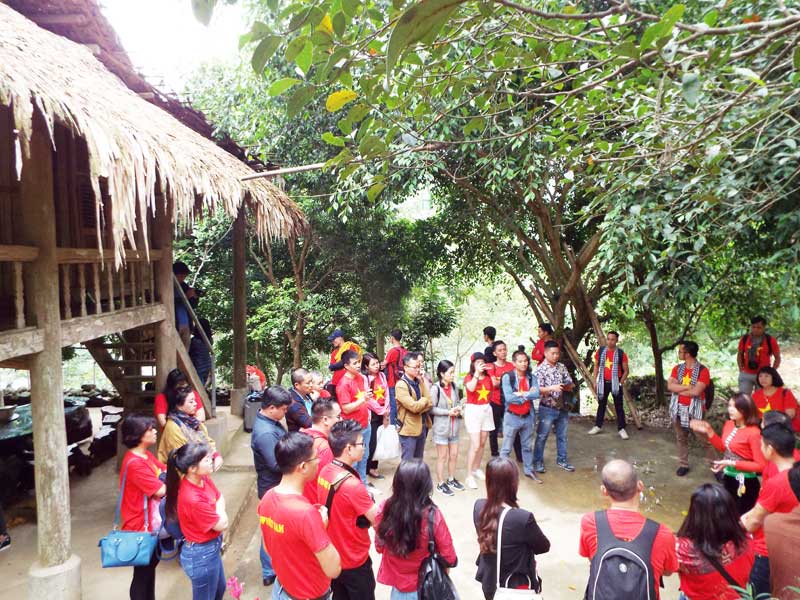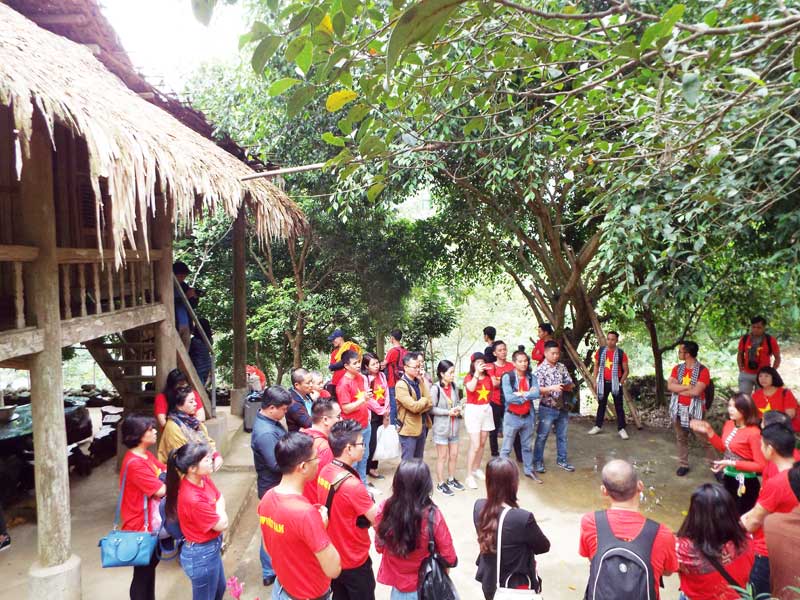


 Da Bia community-based
tourist site in Tien Phong commune, Da Bac district brings exciting experience
to tourists visiting Hoa Binh lake.
Da Bia community-based
tourist site in Tien Phong commune, Da Bac district brings exciting experience
to tourists visiting Hoa Binh lake.
Reporter: Could you tell more about tourism development potential of Hoa Binh lake?
Bui Thi Niem: Hoa Binh lake is the largest artificial lake in Southeast Asia, stretching 70km and covering 17 communes in five districts and city. It has 47 islands and islets, including 11 karst islands sprawling over 116ha and 36 mountain islets covering nearly 160ha.
Apart from possessing charming and poetic landscape, the lake area is imbued with distinctive cultures of such ethnic groups as Muong, Tay, Dao, Thai, which are opportunities to develop discovery, resort and community-based tourism.
Sitting in a special geographical location, Hoa Binh lake lies in a tourism centre in the north, neighboring Hanoi and adjacent provinces, offering an edge to attract tourists.
Reporter: Could you please elaborate key contents of the provincial Party Committee’s Resolution No.14-NQ/TU on the development of Hoa Binh lake into a national tourist area?
Bui Thi Niem: The provincial Party Committee’s Resolution No.14-NQ/TU set the goal of helping Hoa Binh lake area initially meet the criteria required for a national tourist area by 2020. Later by 2030, Hoa Binh lake tourist area will be turned into a national tourist one with synchronous and modern technical infrastructure, diverse and high-quality tourist products imbued with ethnic cultures, becoming the largest tourist centre in Hoa Binh province and one of the 12 key tourist areas in the northern midland region with discovery tours to experience the Muong culture in combination with Hoa Binh lake ecological system.
The resolution set the goal that Hoa Binh lake will welcome about 630,000 visitors by 2020; nearly 1 million by 2025; and roughly 1.6 million by 2030, including 90,000 foreigners. Tourism revenue will near 200 billion VND by 2020, around 580 billion VND by 2025, and some 1.8 trillion VND by 2030.
Reporter: Thank you very much!